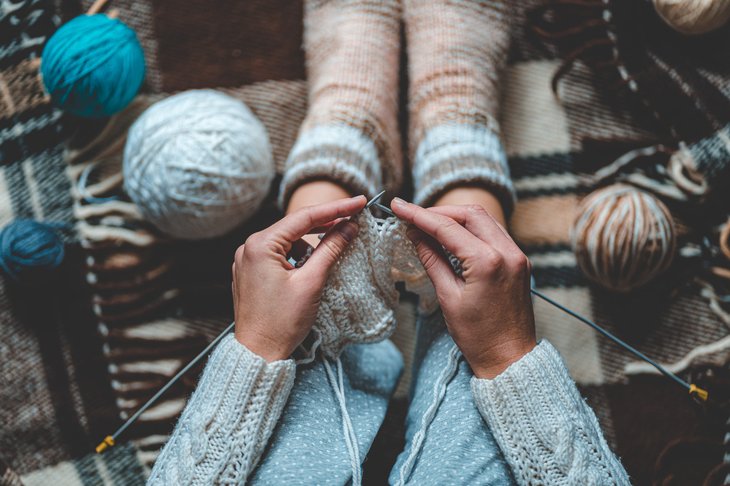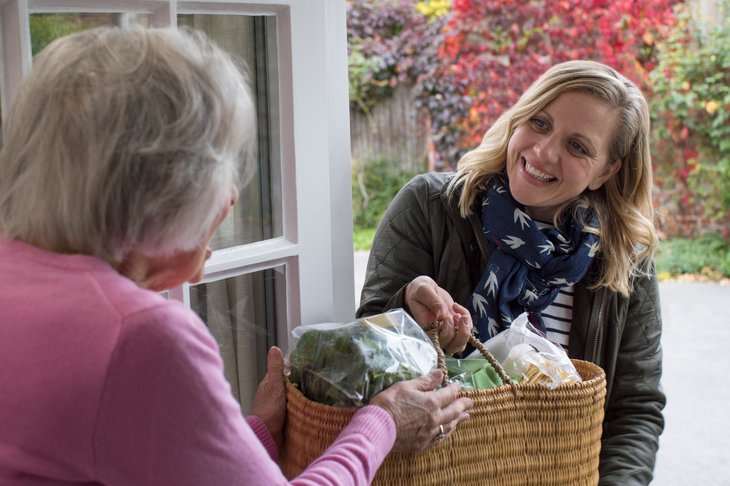
Editor’s Note: This story originally appeared on Living on the Cheap.
With high numbers of people unemployed right now, and money tight for many families, it’s time to look at real ways to save money during trying times.
During the Great Depression, people employed 1930s frugality and simple-living tricks to save money and survive the lean years. We can take a page from their book and do it again.
Here are 10 Depression Era hacks and frugal living ideas that will save you money right now.
1. Grow your own food

In the 1930s, everyone had a “Victory Garden” in their backyard, side yard, rooftop or patio pots. You can grow basic vegetables, like tomatoes, from seeds or seedlings, to augment the grocery store produce that is becoming increasingly expensive.
You can grow herbs in your kitchen window. If you’re a gardening newbie, you can tap into lots of help from your local gardening club, horticultural society or university extension office.
Learn to preserve your own food, too, so you don’t waste any of the food you grow (or even extra produce you buy). When you start canning and drying your own foods, you’ll be the poster child for Depression Era-style frugality.
Get started with the ultimate guide to starting a garden (on the cheap).
2. Cook your own food

During the Great Depression, people got creative with crafting meals out of inexpensive and available ingredients.
Bean soups were a staple of Depression Era recipes, as beans are a cheaper protein than meat, and you can toss whatever leftovers you have on hand into the pot. Rice and potatoes were cheap ways to fill up hungry tummies.
Even if you don’t like to cook, you’ll save by whipping up some simple recipes rather than turning to takeout or meal kits. Look for cheaper cuts of meat or add in a few vegetarian dinners for a more frugal menu.
Raid your pantry and freezer for ingredients you have on hand, and look for recipes that use what you have to cut down your grocery bills. Who knows? These Depression Era hacks might lead you to discover new favorite dishes.
3. Go retro on entertainment

If you’re aiming for some old-fashioned frugal living, give up the expensive subscriptions and go retro on your entertainment choices.
Ditch the expanded cable or one of your streaming site subscriptions. Cancel the gym membership you forget to use or the magazine subscription you rarely read.
Instead, dig out the old electronics and check out a movie from the library. While you’re at it, check out some new music and a few good books. Work out at home with free fitness apps or simple body weight exercises, or go for a run.
Play cards or board games, or listen to a podcast together as a family, as if you were a Depression Era family listening to an old-time radio broadcast. Dust off the guitar in the corner, or the violin you haven’t touched in years, and start playing music again.
Not only will you save money, but you might find yourself spending more quality time with your family.
See our favorite family games that won’t bust the budget.
4. Fix it yourself

Got a leaky faucet? A toilet tank that is running on? Some simple home repairs can be done by the most inexperienced do-it-yourselfer with the instructions that come with the repair kit or video tutorials on YouTube.
Or, ask the guy or gal in the correct department at your home improvement store for some tips. You might not need to shell out hundreds for a handyman to come over for a 15-minute job.
If you’re embracing 1930s frugality, you know that you always try to fix something before you buy a new one. Put a fun patch on the hole in your kid’s jeans rather than heading to Old Navy for a new pair.
Take your cracked cellphone to a repair shop before you pony up for another iPhone. Repair costs tend to be far less than purchasing the newest version of the broken item.
5. Do it yourself

Why buy it when you can make it? This Depression Era hack isn’t only for the crafty who can sew their own clothes. It’s easy to make your own cleaning products that might even work better than store-bought chemicals.
Decorate your house with items you already own or can repurpose, or make your own gift packaging for holidays and birthdays. You can even learn to give yourself a pedicure rather than running out to the salon and paying marked-up prices.
You might find you even enjoy creating things, and suddenly you’re knitting sweaters or crocheting blankets instead of bingeing Netflix.
6. Use everything up

Make your purchases last longer by using everything to the last drop.
Scrape out the very last drop of peanut butter from the jar, squeeze and roll that toothpaste tube until you’re sure nothing more can come out, and use the last dregs of makeup before you buy another eye shadow or mascara. Consider watering down juice or even cleaning supplies just a bit to make them last longer.
7. Get neighborly

Neighbors who helped each other out fared better during the Great Depression. Why not try to build communal goodwill now to help everyone save? Don’t go out and buy a chainsaw for a one-time job when your neighbor would gladly lend you his.
If your child is outgrowing her clothes, see if a local friend has hand-me-downs to give you. Utilize online groups in your community to buy and swap used items or even get things for free.
If you can’t pay, perhaps you could go old-school and trade or barter; you could always volunteer to babysit the neighbors’ kids outside for an hour or rake their leaves.
8. Reuse and repurpose

Embrace your inner grandma and save plastic and glass containers, bread bags and shoeboxes to repurpose instead of buying new zip-top bags and storage containers.
Turn old clothes and sheets into rags or home decor. Before you throw anything out, evaluate whether you can repurpose it into something else that will prevent you from making a purchase. Think of it as a fun challenge!
9. Get a job

Folks who lived through the Great Depression found work wherever they could. Men might have had to take jobs that were new to them, while women sought work outside the house for the first time as cleaning ladies or teachers.
If you’ve been laid off from the restaurant, bar, gym or wherever you were working, you can get creative to find paying gigs available now, from shopping for groceries for shut-ins to delivering packages for online retailers.
You might even be able to work from home. Check out the local jobs center for listings. You might be surprised at what’s available.
10. Go manual

You can save on your utility bills by going for the manual option instead of the electric one. Do as the Depression Era housewives did and line-dry your clothes instead of running the dryer and wash dishes by hand instead of running the dishwasher half empty.
Turn down your heat a degree or two and pile on the sweaters and blankets. Walk or ride your bike to nearby errands and get some exercise while saving on gas and car maintenance. Those little savings will add up.
Disclosure: The information you read here is always objective. However, we sometimes receive compensation when you click links within our stories.



